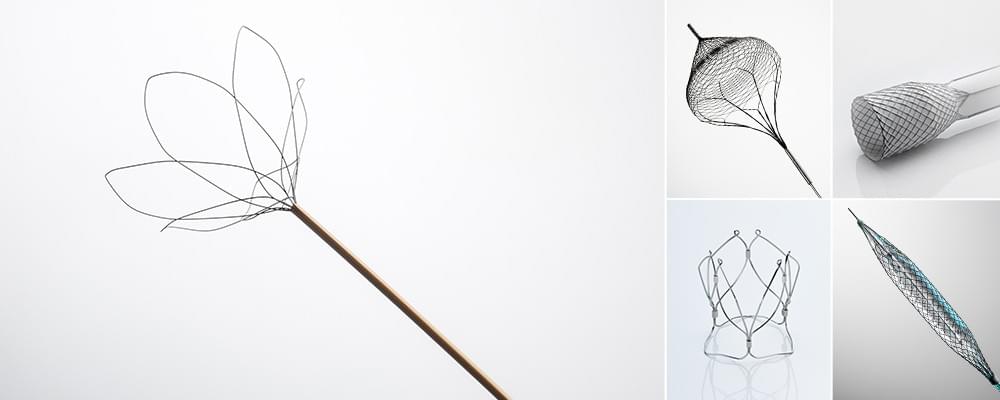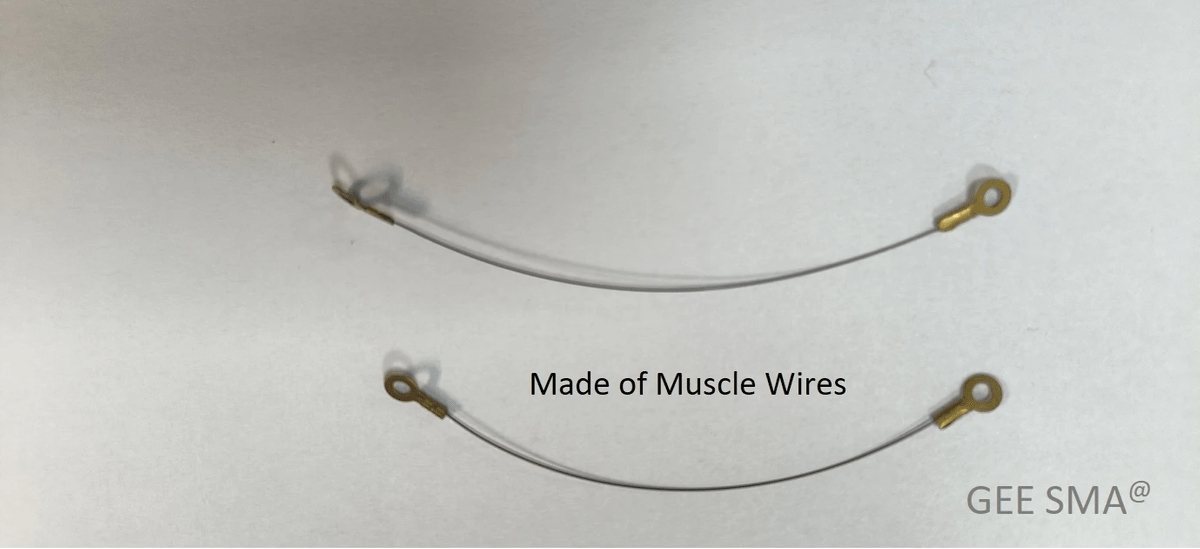Introduction

When it comes to medical procedures, the use of Nitinol guidewire has become increasingly prevalent. This unique wire is made from a nickel-titanium alloy and is known for its flexibility and shape memory properties. Its ability to return to its original shape after being deformed makes it a valuable tool in various medical applications. As we delve into the uses of Nitinol wire, we'll also take a closer look at the Amplatz guidewire, a specialized tool used in cardiology procedures.
Understanding Nitinol Guidewire
Nitinol guidewire is a medical device made from a nickel-titanium alloy known for its superelasticity and shape memory characteristics. This allows it to navigate through tortuous pathways within the body with ease and without losing its original shape. Its unique properties make it an essential tool in minimally invasive surgical procedures, such as endovascular interventions and interventional radiology.
Exploring the uses of Nitinol Wire
The versatility of nitinol wire extends to various medical fields, including cardiology, urology, and neurology. It is commonly used in procedures such as stent placement, embolization, and retrieving foreign bodies from blood vessels or other parts of the body. Its biocompatibility and radiopacity make it an ideal material for these intricate medical applications.
Nitinol wire is also a crucial component in the Amplatz Guidewire, a specialized medical device used in various minimally invasive procedures. This guidewire is known for its exceptional flexibility and shape memory, allowing it to navigate through tortuous blood vessels with ease. The nitinol construction of the Amplatz Guidewire provides the necessary support and durability required for complex interventions, making it a preferred choice among healthcare professionals. Additionally, its radiopacity ensures clear visibility under fluoroscopy, enabling precise placement during delicate procedures such as angioplasty and embolization.
Brief overview of Amplatz Guidewire
The Amplatz guidewire is constructed from nitinol, a unique alloy of nickel and titanium known for its superelasticity and shape memory. This allows the guidewire to be easily maneuvered through tortuous vessels without kinking or losing its shape, providing cardiologists with the flexibility and control needed for successful navigation. Additionally, the nitinol material ensures that the guidewire maintains its strength and resilience even after repeated use, making it a reliable tool for challenging procedures in the cath lab.
What is Nitinol Guidewire?

Nitinol guidewire is a medical device made from a nickel-titanium alloy known for its unique shape memory and superelastic properties. The composition of Nitinol wire consists of nearly equal parts nickel and titanium, allowing it to return to its original shape after being deformed. This makes it ideal for use in minimally invasive medical procedures where flexibility and durability are essential.
Definition and composition
Nitinol guidewire, also known as a shape memory alloy guidewire, is composed of nearly equal parts nickel and titanium, giving it the ability to return to its original shape after being deformed. This unique property allows the wire to navigate through complex pathways within the body without kinking or breaking, making it an invaluable tool in various medical procedures.
Nitinol guidewire's unique composition and shape memory properties make it an ideal choice for navigating through the intricate pathways of the human body during medical procedures. Its ability to return to its original shape after being deformed ensures that it can smoothly maneuver through blood vessels and other structures without causing any damage. This not only reduces the risk of complications for patients but also allows healthcare providers to perform procedures with greater precision and efficiency.
Advantages in medical procedures
The use of Nitinol wire offers several advantages in medical procedures. Its superelasticity allows it to withstand bending and twisting without permanent deformation, ensuring precise navigation through blood vessels and other bodily structures. This flexibility reduces the risk of injury to patients during minimally invasive surgeries while providing physicians with greater control over their instruments.
The superelasticity of Nitinol wire also allows for the creation of self-expanding stents, which can be used to open up blocked or narrowed blood vessels. This innovative technology provides a less invasive alternative to traditional surgical procedures, reducing recovery time and potential complications for patients. Additionally, the unique properties of Nitinol make it an ideal material for orthodontic wires, improving the comfort and effectiveness of braces for dental patients.
Common applications in healthcare
Nitinol wire is widely used in various healthcare applications, including cardiac catheterization, endovascular interventions, and interventional radiology procedures. Its ability to maintain its original shape while navigating through tortuous pathways makes it an indispensable tool for physicians performing delicate surgeries with minimal incisions.
Nitinol wire's flexibility and durability also make it an ideal material for orthodontic braces and stents, providing patients with comfortable and effective treatment options. The use of Nitinol in these devices allows for gradual but constant pressure on teeth or blood vessels, resulting in more efficient and less painful treatments. Additionally, its biocompatibility ensures that patients experience minimal discomfort or adverse reactions during and after the procedures.
The role of Nitinol Wire in Medical Field

Nitinol wire plays a crucial role in the medical field due to its exceptional flexibility and durability. This unique combination allows for precise navigation through complex anatomical structures, making it an ideal choice for minimally invasive procedures. With its ability to withstand repeated bending and torsion, nitinol guidewire ensures reliable performance during delicate medical interventions.
Flexibility and durability
Nitinol wire's remarkable flexibility enables it to navigate through tortuous vessels with ease, minimizing the risk of vessel damage or patient discomfort. Its durability ensures that the guidewire maintains its shape and functionality throughout the procedure, providing healthcare professionals with consistent support during intricate medical interventions.
Compatibility with imaging techniques
One of the key advantages of nitinol wire is its compatibility with various imaging techniques such as fluoroscopy and ultrasound. This allows healthcare providers to visualize the exact location of the guidewire within the patient's body, ensuring accurate placement and reducing the likelihood of complications during procedures.
Impact on patient care and treatment
The use of nitinol guidewire has revolutionized patient care by enabling minimally invasive procedures that offer reduced recovery times, lower risk of complications, and improved overall outcomes for patients. Its contribution to medical treatment has been significant across a wide range of specialties, making it an indispensable tool in modern healthcare.
What is an Amplatz Guidewire?

Origin and development
The Amplatz guidewire was developed by Dr. Mario Amplatz, a pioneer in interventional radiology, as a specialized tool for navigating the complex anatomy of the cardiovascular system. Its origin can be traced back to the 1960s when Dr. Amplatz sought to improve the efficiency and safety of cardiac catheterization procedures.
Specialized uses in cardiology
The Amplatz guidewire is specifically designed for use in cardiology, particularly in procedures such as angioplasty and stent placement. Its unique construction allows for precise navigation through tortuous vessels and tight lesions, making it an essential tool for interventional cardiologists striving for optimal patient outcomes.
Differentiating features from other guidewires
What sets the Amplatz guidewire apart from other guidewires is its exceptional stiffness and torque control, providing unparalleled support during complex interventions in the coronary arteries. This makes it a preferred choice for cardiologists who require a reliable and robust wire to navigate through challenging anatomical structures.
Utilization of Nitinol Wire in Medical Procedures

Endovascular techniques
Nitinol guidewire plays a crucial role in endovascular procedures, such as angioplasty and stent placement. Its exceptional flexibility and shape memory allow for smooth navigation through the intricate network of blood vessels, ensuring precise placement of medical devices to treat vascular conditions.
Interventional radiology applications
In interventional radiology, nitinol wire is utilized for various procedures, including embolization and tumor ablation. Its remarkable kink resistance and torque control enable interventional radiologists to accurately target and treat specific areas within the body, ultimately improving patient outcomes.
Cardiac catheterization procedures
Within cardiac catheterization procedures, nitinol guidewire is indispensable for navigating through the complex coronary arteries during angiography or percutaneous coronary intervention (PCI). Its exceptional trackability and pushability are essential for safely guiding diagnostic or therapeutic catheters to the heart.
Remember that Nitinol guidewires are revolutionizing medical procedures with their exceptional properties, enhancing precision and safety in various interventions.
The two main types of guidewire core

Nitinol wire is a crucial component in the creation of medical devices such as guidewires. These wires are typically made from either solid or hollow cores, each offering unique benefits for different medical procedures. Solid core guidewires provide more support and stiffness, making them ideal for navigating through tough blockages, while hollow core guidewires offer greater flexibility and maneuverability for delicate procedures.
GEE SMA's contribution to Nitinol Shape Memory Alloys
GEE SMA has been a pioneer in the development of Nitinol Shape Memory Alloys (SMA), which play a vital role in the manufacturing of nitinol guidewires. These alloys have the remarkable ability to remember their original shape and return to it when heated, allowing for precise navigation through blood vessels and other anatomical structures during medical procedures.
GEE SMA's expertise in crafting high-quality materials and components has been instrumental in the development of Nitinol Shape Memory Alloys. The precise engineering and attention to detail that GEE SMA brings to the manufacturing process ensures that nitinol guidewires made from these alloys are reliable and effective in medical procedures. This commitment to excellence has solidified GEE SMA's reputation as a trusted provider of advanced materials for the healthcare industry.
Crafting high-quality materials and components
Crafting high-quality materials and components is essential in creating reliable nitinol guidewires that can withstand the rigors of various medical procedures. GEE SMA's commitment to using advanced manufacturing techniques ensures that their nitinol wires meet stringent quality standards, providing healthcare professionals with the confidence they need during intricate interventions. By prioritizing precision and durability in their crafting process, GEE SMA sets a new standard for excellence in the medical device industry.
Tailoring Nitinol functional materials to meet customer needs
One of the key strengths of GEE SMA lies in their ability to tailor nitinol functional materials to meet specific customer requirements. This customization allows for the creation of nitinol guidewires that are perfectly suited for a wide range of medical applications, ensuring optimal performance and patient safety.
Furthermore, GEE SMA's expertise in tailoring nitinol functional materials allows for the development of innovative designs that can address specific challenges in the medical field. By customizing nitinol guidewires to meet customer needs, GEE SMA can offer solutions that improve procedural outcomes and patient experiences. This level of customization also demonstrates GEE SMA's commitment to staying at the forefront of medical technology, providing cutting-edge products that set new industry standards.
Conclusion

Nitinol guidewire technology has seen significant advancements in recent years, revolutionizing medical procedures and patient care. The flexibility, durability, and compatibility with imaging techniques make nitinol wire an invaluable tool in the medical field. As technology continues to evolve, we can expect to see further innovations in medical devices utilizing nitinol wire, leading to improved patient outcomes and enhanced treatment options.
Advancements in Nitinol guidewire technology
The continuous improvements in nitinol wire manufacturing have led to the development of more flexible and durable guidewires, allowing for smoother navigation through complex anatomical structures during medical procedures. These advancements have significantly enhanced the precision and safety of various interventions, ultimately benefiting patients and healthcare providers alike.
Potential future innovations in medical devices
With ongoing research and development efforts, there is great potential for future innovations in medical devices incorporating nitinol wire. From advanced catheterization techniques to minimally invasive surgeries, the versatility of nitinol wire opens doors for groundbreaking technologies that can further improve patient care and treatment outcomes.
Enhancing patient care with Nitinol wire applications
The widespread utilization of nitinol wire in medical procedures has already demonstrated its ability to enhance patient care by enabling less invasive treatments, reducing recovery times, and improving overall procedural success rates. As this trend continues, we can anticipate even greater advancements that will further elevate the standard of care across various specialties within the healthcare industry.

